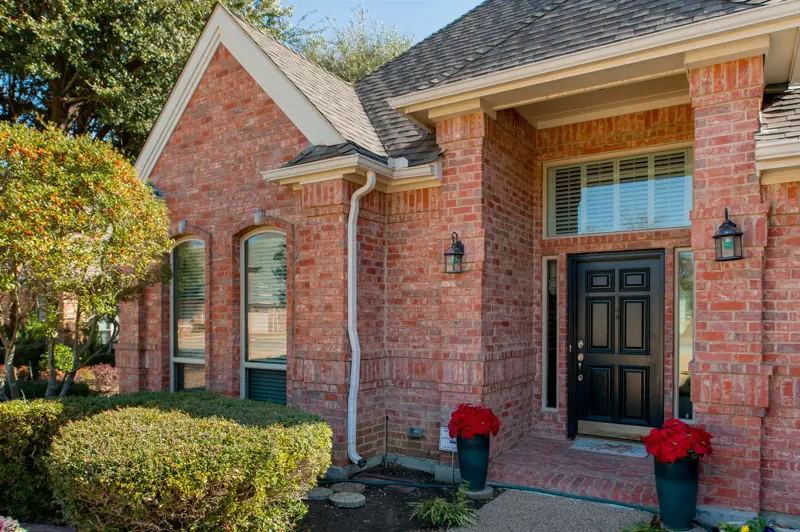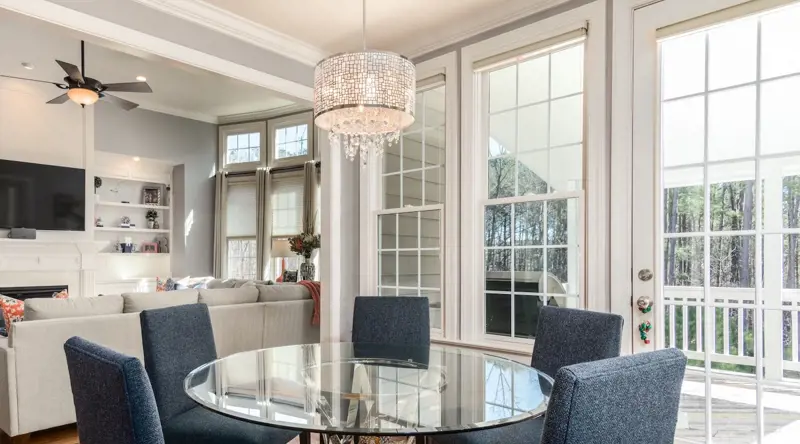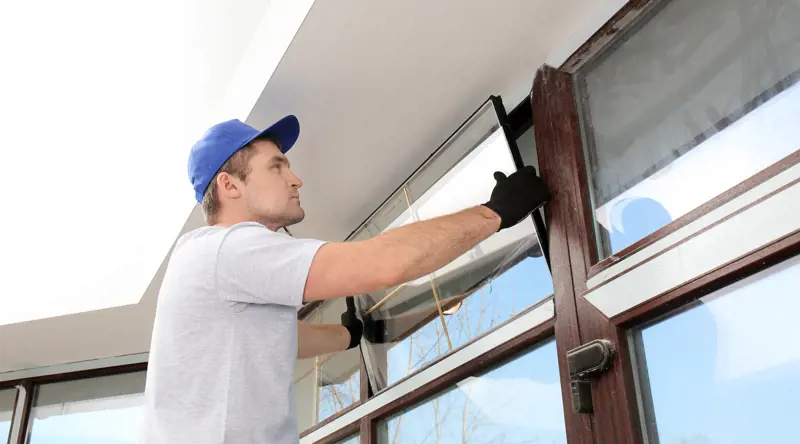
The Most Important Part of a New Window
Windows have an expected life span of between 15 to 20 years if they are not broken or compromised in other ways. That means that the average homeowner will replace their home's windows at least once while they live in their house.
Replacing windows is necessary to maintain your home, keep it secure, and increase its energy-efficiency. However, there are many different options to choose from in terms of window styles and window frame materials. While you'll have lots of elements to consider including the cost, we're here today to talk about the most important part of a new window, the glass.
Use the links below to skip ahead in this post:
Parts of a Window
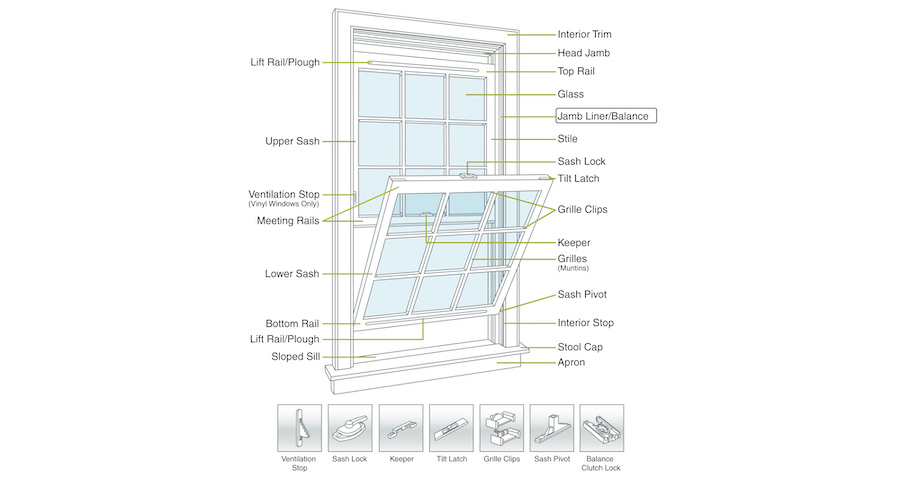
Windows look so simple, and yet there are quite a few parts to any high-quality option. You need to consider the frame, the window's style, balance, color, and some additional features like locking mechanisms. We'll talk a bit more about this before we dive into the glass.
The frame can be made with a variety of materials, some better than others. You'll choose from vinyl, fiberglass, wood, and other metals or composites. According to the U.S. Department of Energy, vinyl, fiberglass, and wood are among the best frame materials↗ to choose from since they have a higher thermal resistance than aluminum and other metal frames.
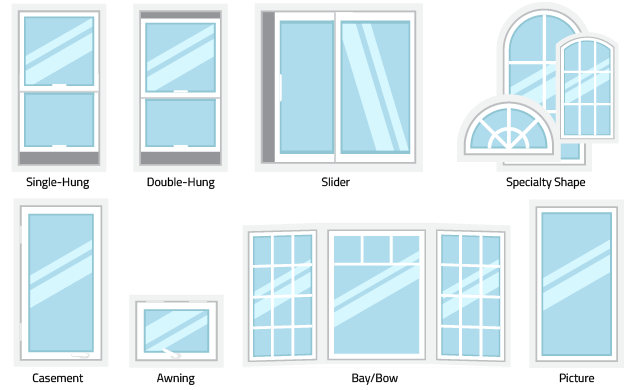
There are many common window styles now as well. Some include:
- Picture
- Single- and double-hung
- Awning
- Sliding
- Casement
Each of these has different energy ratings and better serve distinct purposes. If you are just getting acquainted with window styles, it might help to schedule a consultation with a local window expert (if you're in North Texas, that's us!).
Depending on the popularity of the type of window you choose, it will have more customizations in terms of size, color, and material. These details all matter in relation to aesthetics, how do the individual windows look and how do the fit within the style and look of your home (from both the interior and exterior). However, the look of your window doesn't have anything to do with energy-efficiency unless we're talking about glass coatings. Speaking of window glass, let's talk about that next.
The Most Important Part of a Window


Why is glass the most important part of a window? That's a great question. Glass makes up the largest part of the window proportionally, and it can make or break the window's energy-efficiency. Just think, a single-pane window today won't even meet energy codes while the new standard double-pane window will usually meet criteria and you'll notice the difference in comfort and cost immediately.
Depending on where you live a double-pane window unit may make sense, it works perfectly well in our North Texas climate, but if you live in a state that experiences extremely cold winters a triple-pane window unit might be a better option. The key to choosing the right window glass is making sure that the package you choose creates a window unit that meets your local energy code or meets ENERGY STAR criteria↗. As long as your window meets those requirements you're in the clear, surpassing that criteria usually means building a more expensive window unit and reduces the likelihood you'll see a return on your investment if you decide to sell.
There is more to window glass than the number of panes in a sash, in fact there's a lot that just isn't visible to the eye. We'll discuss window glass options in the following section.
Window Glass Options
Window glass options will vary by vendor but most window manufacturers do purchase their glass from Cardinal Glass. Most window companies will provide a glass package recommendation based on what works best in the area but you know your home best and you can ask for more customized options. Customization options for window glass usually include the number of glass panes in the unit as well as type of insulating gas, and glass coatings.
Panes
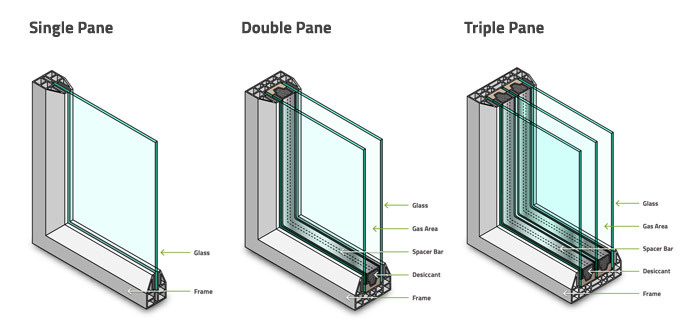
Today's windows are made with large sheets of glass while older glass windows were made with multiple small pieces of glass that were mulled together with wood or metal. Older windows required multiple panes of glass to create one large window because glass could not be manufactured in large single sheets like they are now. Modern windows typically have two or three panes of glass in each sash, windows pre-2000 may have just a single pane of glass.
Double panes are the most common type of window nowadays. A double pane window unit can fit two panes of glass side-by-side within a window sash. The sash also includes a spacer between the glass panes connecting them and providing an additional seal locking in any insulating gas.
- Single Pane: One piece of glass— this configuration does not allow for any insulating gas but is certainly an acceptable and affordable option for a shed or garage.
- Double Pane: Two pieces of glass with a spacer in the gap— this configuration allows for insulating gas.
- Triple Pane: Three pieces of glass with a spacer in each gap— this configuration allows for insulating gas but will cost more than a double pane unit while also adding another layer for natural light to cross through.
Insulating Gas
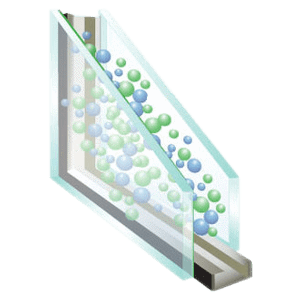
Double and triple pane windows are considered insulated glass units (IGUs). These units are typically filled with invisible non-toxic gas that reduce the unwanted heat loss and heat gain. Gas like Argon and Krypton, which are standard gas fill options, minimize convection currents in a way that air cannot. By padding the space with invisible gas, manufacturers reduce the likelihood that heat will transfer across the window— this prevents your HVAC unit having to work harder to combat changes in temperature. An IGU should keep unwanted heat out in the summer and prevent heat from escaping in the winter.
- Argon Gas: Used most commonly in double pane windows. Argon gas performs best with more space which is available in double pane windows.
- Krypton Gas: Used most commonly in triple pane windows. Krypton performs best in tighter spaces which makes it a better fit for triple pane windows but it is more expensive to produce than Argon gas.
Low-E Coatings
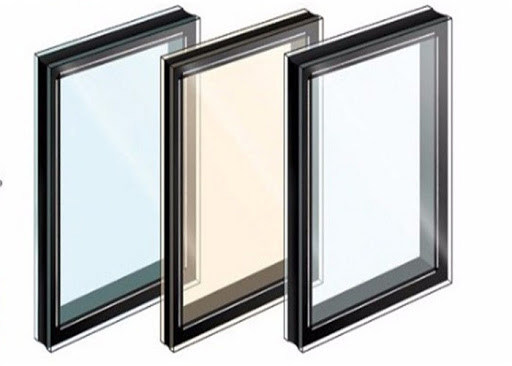
Low-E coatings were developed to block ultraviolet (UV) and infrared (IR) light from passing through glass. While Low-E coatings can't block UV and IR completely they do reduce the transmission of these solar energies without compromising visible light transmission— that means you can enjoy the natural light that comes in through your windows without worrying about damaging solar rays. Low-E coatings are microscopically thin layers of metallic particles, these layers are transparent. There are several types of Low-E coatings but they fall into two categories, Passive Low-E coatings or Solar Control Low-E coatings. Sense most window manufacturers get their glass from the same glass company, they generally offer the same Low-E coating options.
- Passive Low-E Coatings (Hard Coat): Good for extremely cold climates as it transmits solar radiation and reduces heating costs.
- Solar Control Low-E (Soft Coat): Good for hot climates as it blocks solar radiation and reduces cooling costs.
Additional Glass Considerations
In addition to Low-E coatings there are also non-low-E coatings like Tinted glass, Reflective glass, and Anti-Reflective glass. A common glass option is also Tempered glass, this is a type of safety glass that is required in certain applications.
Glass is much more complex than it seems, consult with your local window pro to understand your options.
Oops!
We don't currently serve your area but do want to help you plan your project. Try our Build & Price tool to get an idea of window & door costs within DFW. Your area may be higher or lower but at least you'll have some idea of the price.
Thanks for stopping by.




